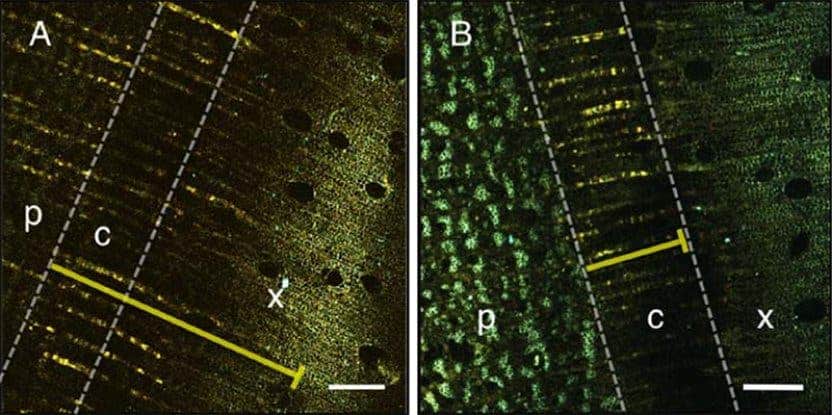There are still many things we have yet to discover about plants, a new study has highlighted. The research team showed that trees don’t just move water up and down like we previously thought – they can store it and move it horizontally if they need it. In a way, they save water for a not-so-rainy day.

In the first study of its kind, scientists from the Hawkesbury Institute for the Environment at the University of Western Sydney in Australia have used fluorescent dyes to map the flow of water through trees and see how the liquid circulates through the plants. They found that the direction is not only vertical, as was previously thought, but also horizontal. This process supports the observations on how trees shrink and expand each day (excluding growth).
It was generally assumed that plants transported food and water through two very separate pathways – the phloem and the xylem. The phloem is the living tissue that carries organic nutrients, in particular sugars and proteins, while the xylem is the woody part responsible for moving water upwards.
Even for large trees, the tiny xylem vessels maintain negative pressure and are able to transfer water all the way to the top; however, in droughty seasons, water bubbles can enter this system and cause the pressure to equalise – this is called ‘cavitation’ and can be very difficult for plants to cope with. But, researchers asked themselves, if water travels only through the xylem, why don’t more plants suffer from cavitation?

With that in mind, the Hawkesbury team set to explore how plants transport and store water. Using microscopy and dyes, they found that water can move at significant rates from the xylem to the phloem, and back again in Sydney Blue Gum trees. Furthermore, they found that water is more likely to travel from the xylem into the food-carrying phloem at night time, when there is more water available. The water is then stored in the phloem until the tree needs it and then travels back to the xylem. A press release explains:
“It is important that the dye is mapped moving from phloem to xylem by mass flow of water, not just simple diffusion, as this highlights the important finding of the research that phloem acts as a water storage capacitor so that the water column in the xylem can be kept continuous.
The dye acts as a proxy for the movement of water and gives a visual on water movement. The finding is that trees make use of horizontal ray parenchyma cells as a conduit for water flow back into the xylem when they need it – that is, when the demand for water caused by negative pressure at times of the day when plants are using a lot of water (low water potential).”
Dr Sebastian Pfautsch, team leader, coins this term ‘Hydraulic Nexus’, building on the already established use of the term Physiological Nexus as a means to understand how plants move proteins, amino acids and other products between phloem and xylem to satisfy the physiological needs of plants.
This research helps us better understand how plants cope with drought and the lack of water, and might be instrumental in better managing dry spells.



